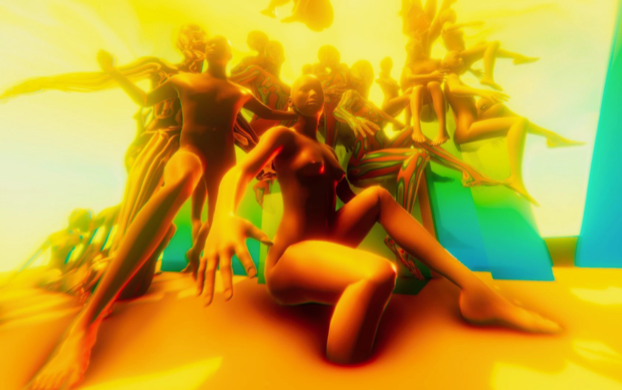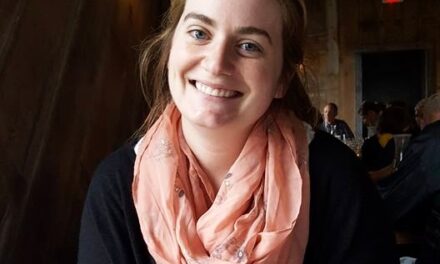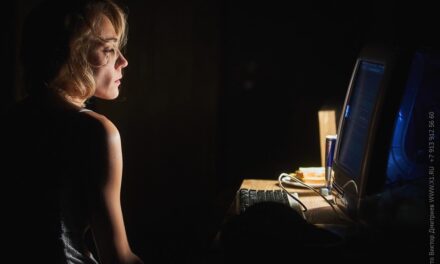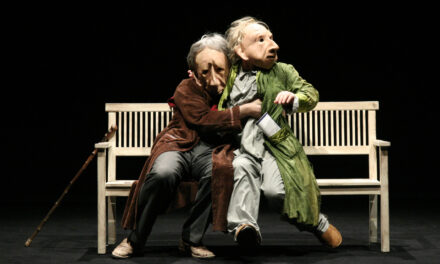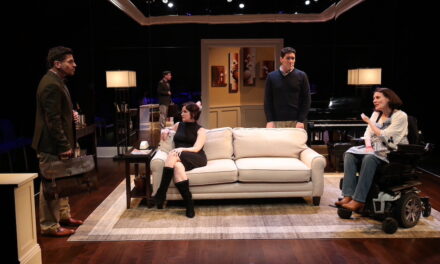Wojtek Markowski is the producer of the Polish experimental lab Dream Adoption Society. Together with the director of the company, Krzysztof Garbaczewski, and other team members they create performances that are taking place both in physical and virtual reality. Markowski graduated from Lodz Film School, and after that, he was producing video art, documentaries, and commercial projects as well. Since 2005 he was doing many cooperation projects, notably with Sharon Lockhart with whom he made several films and photography projects, and one of their last projects was selected to the Venice Biennale. He also gave a lecture at Hungary’s first VR-focused event Vektor VR about their work and how they connect performance art with VR. In our interview we talked about how can VR and performance art intertwine and what are their working mechanics.
Ágnes Karolina Bakk: How did you start to work with the Dream Adoption Society?
Wojtek Markowski: In 2015 I established my company FluxVR and we were making 360-degree videos. In 2017 I saw a performance Robert Robur and then I decided I’d like to work with the director of the show – Krzysztof Garbaczewski. Not much later we met and since then we work together on a daily basis. We started with a 360-degree video streaming: we streamed from Wroclaw on Facebook and YouTube the performance called Lady Macbeth. It took place in a container: people could watch it through a window in the container but also on the telephones. After this we started to collaborate with programmers and graphic designers: we started to develop computer-generated virtual environments with the Unity 3D engine.
ÁB: How would you define the genre of your projects?
WM: We can divide our projects into different categories: one group is the VR-installations. These don’t require performative acts during watching – there are more for galleries. But we are connecting these sometimes to performances: in March 2019 Krzysztof had a premiere in Krakow and in the foyer of the theatre we exhibited our VR installation as well, that was connected to the subject of the theatre piece.
But we also created VR pieces for The Center of Contemporary Art Ujazdowski Castle in Warsaw: we prepared a VR piece entitled Locus Solus. The narrative required Microsoft Kinect that scanned the audience member’s body during the experience. One could interact with it, by using the freedom of the Kinect.
One of our other approaches is: We work on the text such as Symposium and The Republic by Plato. We adapted these to a 25-minute VR experience: every audience member received a headset, and there was one actor per one headset as well, who was guiding the participants. The actor can see where the audience members are in the story, or in this case in the cave and the actors could read excerpts of Plato’s philosophical text. The audience has a connection with the actor and with the virtual as well.
Another category has a more intimate characteristic: to this category belongs the augmented reality piece entitled: The Artist is (all but) Present, this we performed in Warsaw and New York too. It is “just” for one person on an empty stage. When the participants step into the empty room he/she put on the HoloLens, and this way one can interact with the hologram. It is possible to communicate with him and to co-create.
Actually, it is a hidden actor in another room, and he can see and listen to the participant. The hologram pretends to be an artificial intelligence robot and is represented as a point cloud. It asks the participant whether does he/she wants to listen or to participate? If the participant wants to listen then the hologram reads poetry, but if the experiencer wants to collaborate then they co-create poetry together. This can be a very personal experience, but it depends on the person who is experiencing; some make a very personal connection with the hologram, but some are rude and give him orders.
Another approach is the multiplayer VR during a theatre show itself. In one of our performances, there are 30 Samsung Gear VR headsets and the experience is blending VR, live acting, choreography, and live music in order to achieve an immersive theatre experience. Here the process of being immersed is not to take someone into another world but to create an experience shared with all the viewers. The show refers to Jerzy Grotowski’s theory of “art as a vehicle”. When the theatre show starts the experiencer finds him/herself among 10 actors and around 30-50 participants. After the first 20 minutes of the show, there is this magical moment: the actors give the participants VR-goggles in exchange for a physical bonsai tree-like object, that the audience receives upon entering the show. This object appears later in the virtual environment, too. One can see his/her body as an avatar and but also the other viewers, however, the avatars have the faces of the actors.
ÁB: What tools are you using for the multiplayer setting?
WM: We are using Unity Hub; we have 30 clients, each client has different IP-address to connect to the server. When one is in VR as an avatar, you can walk inside the space by jumping or running in the same place, then you move forward. We use the gyroscope of the phone so when one shakes the phone it moves forward the avatar. If one looks up and makes a jump, then the avatar can fly.
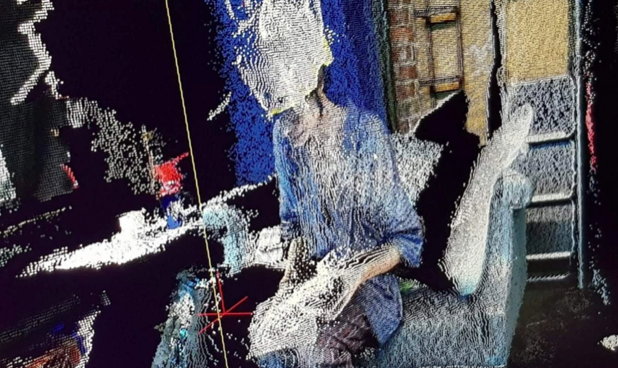
The Artist is (all but) Present.
ÁB: Do you have projects that are on several platforms or mediums?
WM: We also published a book for Prague Quadriennale. We created the project together with the architect Aleksandra Wasilkowska, programmers and designers Marta Nawrot, Jagoda Wójtowicz, Maciej Gniady among others. It is the vision of a utopian city. The project is composed of a Virtual Reality (VR) installation, a book publication, scenography, and an Augmented Reality (AR) mobile application in which intertwining architectural orders create an enlarged city. In the VR piece, you were inside the city and you could see it with your own eyes.
ÁB: Do you call your productions performances, and if you do, why?
WM: Yes, we call them ‘performance’ no matter if it is VR or AR whenever theatre professionals take a role in the process of creating or showing. Sometimes we call it a theatre performance with the use of VR. But all these are just names. Recently we also started to work in VR Chat. It is an incredible, multiplayer environment where people can act together live online. With our works, we do not want only to take somebody to another world, but our idea is to create something together in a multiplayer application, to take actions as a collective and by this, we would like to enable the audience’s ability to change for himself/herself the environment and to communicate with the artificial characters.
ÁB: Why are you using so many philosophical texts in your work? What is the common path between philosophy and VR?
WM: The path is a natural development of the artistic expression by the director Krzysztof Garbaczewski. He has been creating theatre pieces for the last 15 years. The fact that he has been always dealing with literature, poetry, and philosophy has a big impact on the ideas of our VR projects.
ÁB: How do you see the future of the theatre audience? Will they have to be more participative, or will they still have the chance to stay aside?
WM: On the one hand, the theatre of the future is where you can sit at your home and connect to the virtual world by choosing the actors that you want to see. 360-video streaming is already there as well, and theatres also stream online. It would be interesting to see how this would work by translating these simultaneously into Chinese. It sounds very interesting, but on the other hand, the effort to go out makes it more valuable. Watching at home is more likely to be entertainment, but we do not want theatre to be only a streaming platform. The physical aspect of the presence of the actors cannot be replaced. We are trying to achieve the immersion and the deep emotional involvement of the viewers and thanks to the collective performance and our participatory approach they can become part of the show and this is very important. In the future, we would still go to the theatre but the devices which can lead us farther to the future would be much more comfortable.
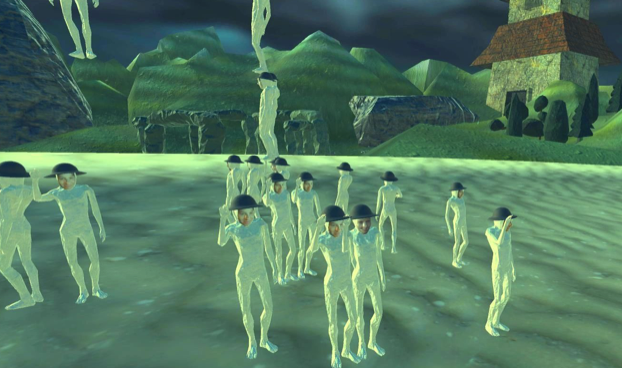
Nietota – Live/Real-Time, Virtual Reality Theatre Performance
ÁB: Do you believe in the idea that a good performance can enhance the internal coherence of a community? Or do you think this is only a utopia?
WM: Each theatre has its own audience and goals. The Powszechny Theatre in Warsaw where we are based in is trying to be close to the local community and have a great effect on people. There are very interesting NGOs working there every day creating workshops, music events, poetry slams, or food sharing space. So it is not only the theatre pieces that have the impact. As they say, it is a theatre that interferes. Their repertoire is often connected to issues like climate change, feminism, social injustice, lack of democracy, dangers of today’s politics, or the power of the Polish catholic church.
Although we share similar values we are not so much involved in politics. We would like to talk about important issues as well but more by making it possible for the people to see and feel incredible, unforgettable experiences and we do it in a more digital way. Dream Adoption Society has a very cool space at Powszechny Theatre in Warsaw where we organize performances, exhibitions, meetings, and concerts. We would like to gather different people at our space to discuss and experience contemporary art, to exchange inspirations and ideas, to share a safe place of free expression, open for diversity. Soon we will also open such a space at VR Chat – the online social virtual reality platform. I strongly believe these actions in the digital but most importantly in the real world enhance the coherence of the local community.
In New York and Toronto, most of the theatre pieces I’ve seen are socially engaged and talk about social minority problems and the challenges of society today. If you do not talk about something important it does not matter. Dream Adoption Society’s projects seem to depict important issues like social responsibility and humanity but in a more spiritual and not straightforward way.
Locus Solus – Virtual Reality Experience Created by: Marta Nawrot, Jagoda Wójtowicz, Maciej Gniady, Krzysztof Garbaczewski, Wojtek Markowski, Paweł Smagała, Jan Duszyński, Bartosz Zaskórski, Jim Fletcher, Robert Mleczko, Iza Szostak.
The Artist is (all but) Present – Augmented Reality Performance / Created by: Zbigniew Bzymek, Andrew Maillet, Krzysztof Garbaczewski, Maciej Gniady, Marta Nawrot, Jagoda Wójtowicz, Jacek Naruniec
Nietota – Virtual Reality Theatre Performance Created by: Krzysztof Garbaczewski, Wojciech Markowski, Maciej Gniady, Mateusz Świderski, Jagoda Wójtowicz, Marta Nawrot, Iza Szostak, Jan Strumiłło, Piotr Pieczyński, Marcin Kosakowski, Jan Duszyński, Kuba Olszak, Julia Wyszyńska, Julian Świeżewski, Oskar Stoczyński, Magdalena Koleśnik, Aleksandra Bożek, Karolina Adamczyk.
This interview is supported by International Visegrad Fund
This article was originally posted at zip-scene.com on April 1, 2020, and has been reposted with permission. To read the original article, click here.
This post was written by the author in their personal capacity.The opinions expressed in this article are the author’s own and do not reflect the view of The Theatre Times, their staff or collaborators.
This post was written by Ágnes Bakk.
The views expressed here belong to the author and do not necessarily reflect our views and opinions.

